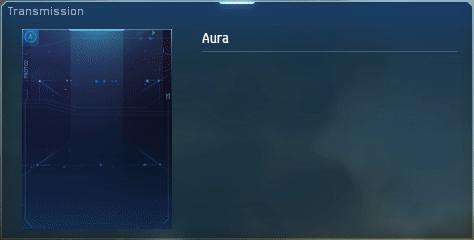Avatars, Agents & Aura

Avatars Communicate Identity
In New Eden, a player’s identity has value. Status, reputation, wealth, and power all spring from the identities that players form for themselves. The first and most visual representations of that identity are their three-dimensional avatar and character portrait.
Since the experience of playing EVE, though, takes place mostly in space, we naturally asked ourselves, “How can we offer ways for players to take better advantage of all the value represented by avatars in Eve’s flying-in-space game?”
New Goals
A couple of avatar-based concepts have made their way into the game – such as CEO portraits on structures and but one element that many of the larger ideas shared was bringing characters to life with animation.

The Katia Sae Monument
State Machines
Characters that move and talk demand extra layers of complexity: A subtle idle animation provides a foundation for intentional movement, on top of which lip-sync animations and facial expressions representing mood are layered.
For the greatest flexibility, animation systems in games are built around so-called state machines, which represent various behavioral states and how an animated entity may transition between them. Ships in EVE use a state machine which allows, for example, moving parts to shift as the ship goes into a warp state, then shift back as the ship lands on grid.
As it turns out, our existing animation and modeling middleware for flying-in-space had included a state machine system that was ideal for our needs but required explicit software changes to the EVE game client: new tools, animation, and software changes to permit loading, playing back, and triggering state changes for these machines.

How an animator sees a character’s state machine
Idle hands…
Our first project with this system was to add a more interesting idle animation to the EVE character creator. Earlier changes to remove obsolete middleware had replaced a complex, varied idle with a long, looped animation that gave a similar impression while not including more dramatic behaviors like fidgeting, and we wished to restore some of the life and complexity that had been lost with that work.
The new state machine system allowed us to start with basic idle movement and breathing, and at intervals, trigger fidgeting behavior with hands, looking around, and other activity. We also used its capabilities to capture more interesting action in full-body view, and to move less when seen close-up, since a player sculpting their character will not wish to chase the character with their mouse.

What is he looking at?
A New Look for Aura
At the same time, we set out to develop a new look for Aura. Up to that point Aura had always been represented in-game through painted 2D images. Now, she was to take on corporeal form as a 3D avatar – augmenting her existing appearance while retaining her identity.
After reviewing various depictions and descriptions of her appearance throughout the years, we found that the one that resonated the most was Excena Foer's hologram depiction in the EVE Chronicles.

How Much Is That Agent In The Window?
Before the new Aura, EVE rendered 3D characters into windows in only a few places: The full-body preview window in a character’s ‘Show Info’ dialog box, the live portrait in the character sheet header, and previews for clothing in the NES and in-game market views. (These are technically distinct from the character creator and character customization screens, where the character appears in a full-screen view dedicated to the character scene.) Each of these windows are custom-constructed and use slightly varying techniques to set up the character and the scene they contain.
To make it easier to add characters wherever we liked elsewhere in the game, we needed a scene format that would contain all the building blocks for assembling each character in a scene —lights, a camera, an optional background, overall color correction, sound cues, and animation.
Creating the New Aura
Aura's state machine includes controls that provide certain randomized gestures, as well as specific controls to allow hand-animating her look, direction, and other key properties of her movement.
Aura’s state machine also includes controls over the face shapes that correspond to a number of common language sounds. While in the past, an animator would have had to adjust face shapes manually to match speech, in recent years off-the-shelf tools have become available that can help automate this process, cutting hours off the amount of work necessary per scene.
We worked through each of Aura’s recorded dialogue lines, using an automated tool to generate a first pass at her face shape animations from voice audio, making small tweaks, and layering that on top of body animation that we created using inputs to her state machine.
We first populated the tutorial with a generic close-up of Aura, lit neutrally, in an idle state, and as animation for each line became available, we modified the tutorial data to trigger it. When work had been completed for the entire tutorial, we had created custom scenes for over a hundred lines of dialogue.

Animating a scene in Jessica
Ironing Out the Details
Playing back Aura’s scenes in the tutorial in real time puts her in a much more dynamic environment than it would to render her animation to video.
Players can move windows around, skip lines of dialogue, minimize and maximize the tutorial window (once the Neocom is visible), and open other windows, such as EVE’s settings. Extensive testing and development were also required to attain the level of polish you see in the tutorial today.

Aura as she appears in the tutorial
Into the Future
Throughout this project, our focus has been on investing in a foundation that can, in the future, bring characters to all parts of the EVE experience.
Currently, Aura in the tutorial is presented much like a miniature in-game cinematic, but as we go further, state machine technology will allow us to create more persistent characters whose ongoing behavior changes depending on events that happen in-game.
This opens up many possibilities for the future, such as the ability to better see the face of your enemy, or to let them see yours.
Bringing Aura to life in the tutorial brings her closer to the ideal of a space companion, keeping new players company during their first hours of exploring New Eden.





